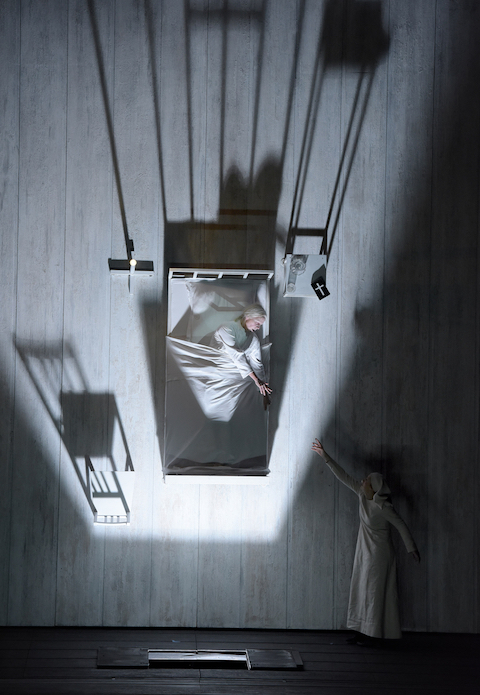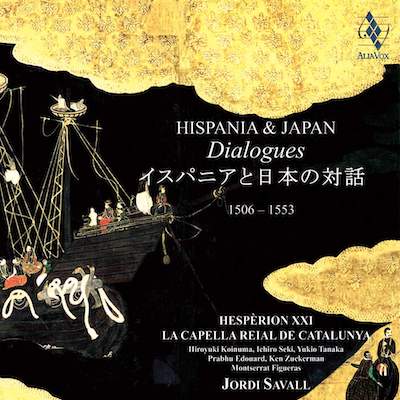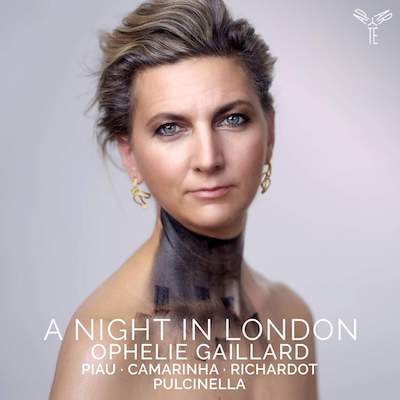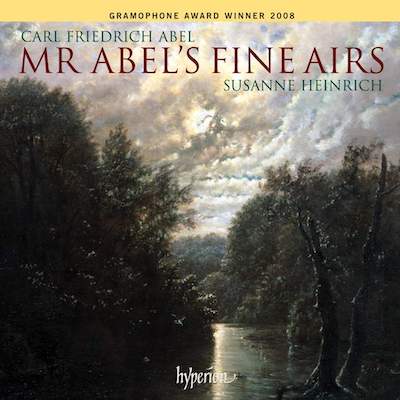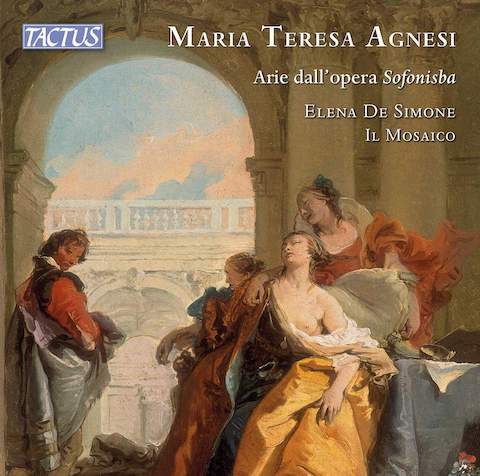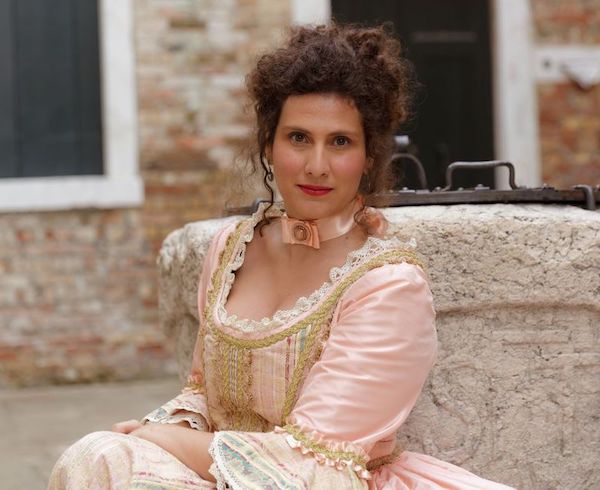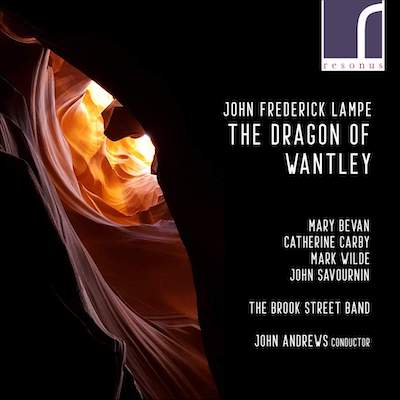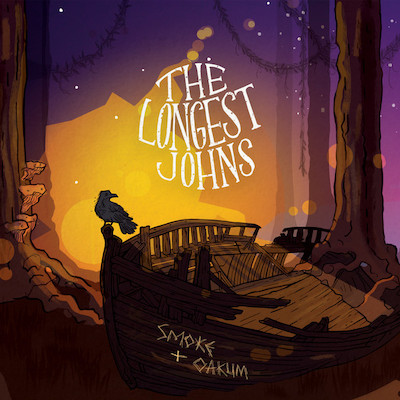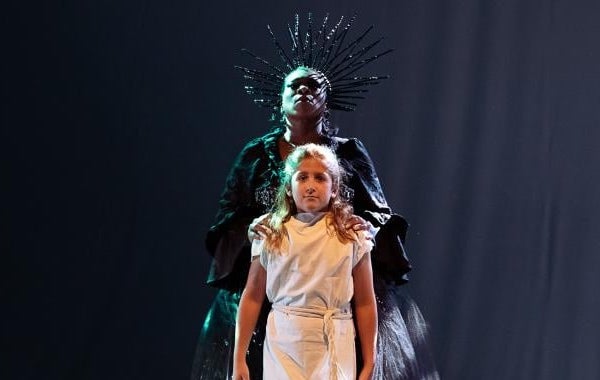Favorites of 2022: Live and streamed performances
Jasmine Johnson as Andromaca in Leonardo Vinci's Astinatte. Photo credit: Valentina Sadiul. Image source: OperaWire
Favorite live and streamed performances seen in the past 12 months, in reverse chronological order by date of performance:
LIVE OPERA AND ORATORIO
Ars Minerva: Astianatte
ODC Theater, San Francisco, seen October 23, 2022
Jasmine Johnson as Andromaca and Anthony Polakoff as Astianatte. Photo credit: Valentina Sadiul. Image source: San Francisco Classical Voice
Leonardo Vinci's Astianatte (1725) is packed with high drama: in the aftermath of the Trojan War, the victorious Greeks begin to squabble among themselves while the captive Trojan widow Andromaca (Jasmine Johnson) desperately tries to save her son Astianatte (Anthony Polakoff) from execution. Meanwhile, there's a long-simmering love triangle between the Greeks Pirro (Deborah Martinez Rosengaus), Oreste (Nikola Printz), and Ermione (Aura Veruni), who was once in love with Oreste but is now betrothed to Pirro.
Vinci wrote Astianatte for four of the greatest singers in the world. Any company seeking to revive it needs four superlative singers, a requirement that Céline Ricci's Ars Minerva decidedly fulfilled. Musically this was also Ars Minerva's largest-scale production to date, with 14-piece period-instrument chamber orchestra conducted by Matthew Dirst accompanying the singers. The staging was enhanced by Marina Polakoff's sculptural costumes, Ricci's clever direction, Entropy's scene-setting projections and Delayne Medoff's evocative lighting. Ars Minerva surpasses itself with every production.
For more information and full credits, please see the post "Ars Minerva: Astianatte."
American Bach Soloists: Belshazzar
Herbst Theater, San Francisco, seen July 30, 2022
Maya Kherani, Belshazzar's mother Nitocris in American Bach Soloists' performance of Handel's Belshazzar. Image source: MayaKherani.com
ABS Artistic Director Jeffrey Thomas assembled an excellent cast for a concert performance of Handel's rarely-performed oratorio. During the feast of the Babylonian god Sesach mysterious writing appears on the wall: "Mene, Mene, Tekel, Upharsin." The Babylonian king Belshazzar (tenor Matthew Hill) calls his wise men, but none can decipher the meaning. Only the Jewish prophet Daniel (the rich-voiced mezzo-soprano Sarah Coit) can interpret the words, and the news is not good for Belshazzar. Belshazzar's mother Nitocris (pure-toned soprano Maya Kherani) urges him not to offend the god of Daniel, but Belshazzar scorns her. Meanwhile, as the Babylonians eat and drink, a Persian army under Cyrus (countertenor Eric Jurenas) has diverted the Euphrates and enters the city using the now-dry riverbed.
The libretto was written by Charles Jennens, who most famously compiled the libretto of Messiah. In his classic book Handel's Dramatic Oratorios and Masques (Oxford University Press, 1959), Winton Dean calls the three months during the summer of 1744 in which Handel simultaneously composed Belshazzar and Hercules "the peak of Handel's creative life"—quite an assertion for a writer who is well aware that between January and April 1735 Handel premiered Ariodante and Alcina (my votes for Handel's peak three months, but then who am I?). Thomas and his first-rate cast made a compelling case for Belshazzar as one of the pinnacles of Handel's musical achievement.
For more information and full credits, please see the American Bach Soloists program.
Honorable mention:
San Francisco Opera: Eugene Onegin, Dialogues of the Carmelites, and Orpheus and Eurydice
General Director Matthew Shilvock's programming for this centennial SF Opera season has been remarkably daring: of the eight operas in the fall and summer season, two are receiving their world premieres in 2022 (John Adams' Anthony and Cleopatra and Gabriela Lena Frank's Frida y Diego). Of the remaining operas, Tchaikovsky's Eugene Onegin was last performed at SF Opera in 2004, Richard Strauss's Die Frau Ohne Schatten (The Woman Without a Shadow) in 1989, Poulenc's Dialogues des Carmélites in 1982, and Gluck's Orfeo ed Euridice not since its SF Opera premiere in 1959. Even the two more recently performed operas (Verdi's La Traviata, last performed in 2017, and Puccini's Madama Butterfly, last performed in 2016) are being given new productions.
We attended three of the fall operas in the War Memorial Opera House. Each featured excellent singers, some known to us and some new; a striking (if occasionally problematic) production design; and the glorious SF Opera Orchestra in the pit. So why aren't these performances firmly among my favorites?
Evgenia Muraveva as Tatiana Larina in Tchaikovsky's Eugene Onegin at SF Opera. Photo credit: Cory Weaver. Image source: Opera Today
Eugene Onegin was presented in the Robert Carsen production, which surrounds center stage with fallen autumn leaves and frames the action as the memory of the devastated Onegin. It's generally effective; least so, perhaps, in the Letter Scene, which has Tatiana rolling around in dead leaves to express ecstasy about her blossoming first love. (I know: how pathetically literal of me.) But the main problem is that this production (now 25 years old) was filmed in 2007 with a well-nigh ideal Onegin in Dmitri Hvorostovsky and the glamorous Tatiana of Renée Fleming. Comparisons are impossible to avoid, and at SF Opera on September 25 both Gordon Bintner's Onegin and Evgenia Muraveva's Tatiana lacked vocal charisma. Their final confrontation, which should be emotionally wrenching, never caught dramatic fire. When singers in secondary roles such as Aigul Akhmetshina as Tatiana's sister Olga and Evan Leroy Johnson as Onegin's friend Lensky outshine the principals, something is seriously amiss.
For more information about the opera, including the parallels between the story and Tchaikovsky's life, please see the post "Tchaikovsky's Eugene Onegin - The Letter."
Michaela Schuster as the Prioress Madame de Croissy and Heidi Stober as the novice Blanche de la Force in Francis Poulenc's Dialogues des Carmélites at SF Opera. Photo credit: Cory Weaver. Image source: Air Mail
Dialogues of the Carmelites, seen October 30, portrays the Martyrs of Compiègne, 16 women of the Carmelite religious order who were executed by guillotine in July 1794. The opera had its U.S. premiere at SF Opera in 1957 in English translation. As the title implies, Poulenc's music is largely conversational and follows the rhythms of speech. Song is used at the very end, as the women intone the "Salve Regina" and one by one are silenced by the guillotine. It's a powerful scene. Unfortunately in Olivier Py's production it verges on kitsch, as from our vantage point in the dress circle each of the white-clad women in turn descended off the back of the stage and then, with outstretched arms, appeared to float away into the starry sky (like angels? Please tell me I'm wrong).
Py made some other odd directorial choices, such as regularly shining spotlights into the faces of the audience. The Prioress's death scene midway through the opera is staged on a bed placed upright, as though we were looking down on her (and, of course, as though she is being crucified). It's a visually arresting image, but it makes the characters witnessing her torment seem as though they are standing perpendicularly on the walls or lying on the floor. (I know: how pathetically literal of me.)
For more information and full credits, please see the San Francisco Opera press release.
Jakub Jósef Orlinski as Orpheus in Gluck's Orfeo ed Euridice at SF Opera. Photo credit: Cory Weaver. Image source: San Francisco Chronicle
Orpheus and Eurydice, seen November 20, was performed in Gluck's 1762 Italian version. Gluck never anticipated, though, that when the curtain rose Orpheus would enact the frenzy of grief by performing jaw-droppingly athletic breakdancing moves. Countertenor Jakub Jósef Orlinski also trained as a dancer, and seeing him do flips, spinning handstands, windmills, swipes, and backspins was astonishing. (My partner thought that we were watching an SF Opera dancer, until he started singing. Don't ask me how he managed not to be completely out of breath.)
The stage was a vast circle, with Alexander V. Nichols' projections of brain images delineating Orpheus' journey through the underworld to recover Eurydice. The projections were quite vivid, but changed so frequently that I found them distracting—at times it was like watching a psychedelic light show. And director Matthew Ozawa ignored the implications of one of Nichols' most striking images: when the stage apparently split apart at the moment of Euridice's second death, Ozawa had Euridice lying suspended over the newly-opened abyss and Orpheus kneeling next to her in empty space, instead of having them separated on either side of the chasm. (I know: how pathetically literal of me.)
But staging miscalculations aside, Orlinski's voice got a bit lost in the vast War Memorial Opera House, built for Verdi and Puccini rather than 18th-century operas (the Burgtheater in Vienna, where Gluck's opera had its first performance, is one-third the size of the War Memorial). Although both Meigul Zhang's Euridice and Nicole Heaston's Amore were outstanding, Orpheus must carry the opera. His voice, of course, is supposed to be so irresistible that it can "placate the Furies, monsters, and pitiless Death." This isn't just a matter of volume, and the beauty of Orlinski's voice would probably have been more apparent in a suitably-sized theater (hello, Glyndebourne).
Still, Matthew Shilvock's adventurous programming choices are welcomed; I'm looking forward to the 2023-24 season announcement in January. For more information and full credits for Orpheus and Eurydice please see the San Francisco Opera press release.
STREAMED OPERA
Glyndebourne Encore: Les Mamelles de Tirésias
Elsa Benoit as Therèse and Régis Mengus as the Husband in Poulenc's Les Mamelles de Tirésias. Laurent Pelly, direction and costume design (in collaboration with Jean-Jacques Delmotte), Caroline Ginet, set design. Photo credit: Bill Cooper. Image source: Glyndebourne
In Aristophanes' Lysistrata women go on a sex strike to force men to end war. In Poulenc's Les Mamelles de Tirésias (The Breasts of Tiresias, 1947), put-upon wife Thèrese goes the women of ancient Greece one better: she changes gender entirely. Discarding her breasts (which then, as huge pink balloons, float over the proceedings) and becoming Tirésias, she flees her importunate Husband. Left wifeless, he dons a corset and answers the call of the State for procreation by inventing an elaborate machine to produce 40,049 babies.
Members of the Glyndebourne Chorus in Poulenc's Les Mamelles de Tirésias. Photo credit: Bill Cooper. Image source: The Guardian
Laurent Pelly's production of Poulenc's adaptation of Guillaume Apollinaire's surrealist farce keeps the brilliant visual ideas coming so fast you'll want to rewatch the opera to be sure you catch them all. No matter—you'll want to rewatch the opera anyway for sheer pleasure.
For more information and full credits please see Glyndebourne Encore.
Boston Baroque: Amadigi di Gaula
Anthony Roth Costanzo as Amadis of Gaul. Image source: Boston Baroque.
Handel's 11th opera, Amadigi di Gaula, unusually has only four main characters; also unusually, half of them lie dead by the end of the opera. The sorceress Melissa (Amanda Forsythe) has abducted Oriana (Camilla Ortiz); Oriana's lover Amadigi (Anthony Roth Costanzo) attempts to rescue her with the aid of Dardano (Daniella Mack), who comes to realize that he and Amadigi are rivals for Oriana's affections. (The original cast featured the castrato Nicolini as Amadigi, the soprano Anastasia Robinson as Oriana, and alto Diana Vico as Dardano.) Amadigi's relatively small scale and straightforward story made it a perfect choice for Boston Baroque's semi-staging directed by Louisa Muller, and the cast assembled by music director Martin Pearlman would be the envy of any opera house.
For more information, please see Boston Baroque.
Honorable mention:
Glyndebourne Encore: Alcina
Jane Archibald as Alcina at Glyndebourne. Photo credit: Tristram Kenton. Image source: Glyndebourne
Perhaps inspired by all the cross-dressing in Baroque opera, director Francesco Micheli set Handel's Alcina in a 1960s nightclub, its own kind of enchanted island. The sorceress Alcina (Jane Archibald) is the owner/headliner, assisted by Morgana (Soraya Mafi). Ruggiero (Samantha Hankey) is a besotted customer whose fiancée Bradamante (Beth Taylor), in male disguise as "Ricciardo," attempts to bring him back to his former life and prior commitments (meanwhile causing Morgana, who is attracted to this handsome stranger, some erotic confusion).
The nightclub setting allows set designer Edoardo Sanchi and costume designer Alessio Rosati to give free range to their imaginations, as seen in Alcina's "shipwreck" number above. But as a metaphor for Alcina's magic island it also lowers the stakes. The opera is no longer a fierce contest between good and, well, less good, or a devastating depiction of the inexorable loss of love. Instead it becomes a parable of the "tragedy of development," in Marshall Berman's term, as (spoiler alert!) property developers close Alcina's nightclub in order to build more faceless high-rise offices. The cast is very good, but without a sense that life and death issues are at stake some urgency is lost.
For more information, please see Glyndebourne Encore.
Biggest disappointment:
Glyndebourne Encore: La Bohème
Yaritza Véliz as Mimì and Sehoon Moon as Rodolfo in Puccini's La Bohème at Glyndebourne. Floris Visser, direction, Dieuweke Van Reij, set design. Photo credit: Richard Hubert Smith. Image source: Glyndebourne
Or, as my partner and I refer to it, "La Bohème in an alley." We made it about halfway through Act I before the multiple absurdities and heavy-handed symbolism of Floris Visser's direction—literally, La Bohème in a grave-like alley, with a silent actor looking on representing, yes, Death—drove us to put on a DVD of the 1965 La Scala production directed by Franco Zeffirelli and starring the young Mirella Freni as a touchingly vulnerable Mimì. (And before you sneer at our hidebound traditionalism, we also like Baz Luhrman's "Paris in the 50's" production for Opera Australia and are intrigued by Yuval Sharon's "backwards Bohème" for Boston Lyric Opera.) No fault of the young cast, who gamely gave it their best. This is the first new production of La Bohème at Glyndebourne in two decades, but let us hope that this will be its only Festival run.
For more information, please see Glyndebourne Encore.
STREAMED CONCERT AND RECITAL
Boston Early Music Festival: Vox Luminis
Vox Luminis; director Lionel Meunier second from left. Image source: BEMF.org
Vox Luminis, led by director Lionel Meunier, performed a program of sacred music from Monteverdi's Selva morale e spirituale (The Moral and Spiritual Forest) with astonishing precision, blend, and beauty. This concert will be available to watch until December 2, 2022. For more information, please see BEMF.org.
Boston Early Music Festival: Philippe Jaroussky
Philippe Jaroussky and Le Concert de la Loge at the Royaumont Abbey.
In place of the live BEMF concert offering of Baroque opera arias performed by Jaroussky and his Ensemble Artaserse, the virtual program was a recorded performance of sacred music by Vivaldi, Pergolesi and Scarlatti recorded at the Royaumont Abbey in 2020. Ravishing music ravishingly performed by Jaroussky and Le Concert de la Loge. For more information, please see BEMF.org.
Other Favorites of 2022:




